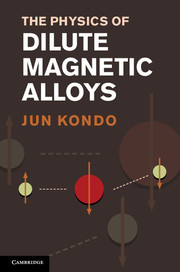4 - Band theory
Published online by Cambridge University Press: 05 March 2013
Summary
The subject of this chapter is solving the Schrödinger equation for electrons moving in a periodic mean field in crystals. The solution is called the Bloch orbital. We discuss Bloch's theorem, which applies to it. As for the energy eigenvalues, there are allowed and forbidden values. The allowed values are distributed in extended regions that are called bands. The forbidden values comprise the gaps. In order to calculate the Bloch orbital, we make use of an approximation based on the free electron model, and another approximation based on the linear combination of atomic orbitals. As a more realistic approach, we discuss the Wigner-Seitz method.
The periodic structure of crystals
In the previous chapter, we showed that many experimental facts can be explained by assuming that the conduction electrons in metals move in a uniform mean field. However, in real metals, there are collisions with ions. A question arises as to why these collisions do not cause a significant effect. Moreover, there are some problems that cannot be explained in the free electron model. One such problem is the quantitative deviations from the experimental results. Also, the signs associated with the Hall effect and the thermoelectric power are often opposite to that expected in the free electron model. Another problem is why this model does not apply at all to the case of insulators.
- Type
- Chapter
- Information
- The Physics of Dilute Magnetic Alloys , pp. 49 - 68Publisher: Cambridge University PressPrint publication year: 2012



